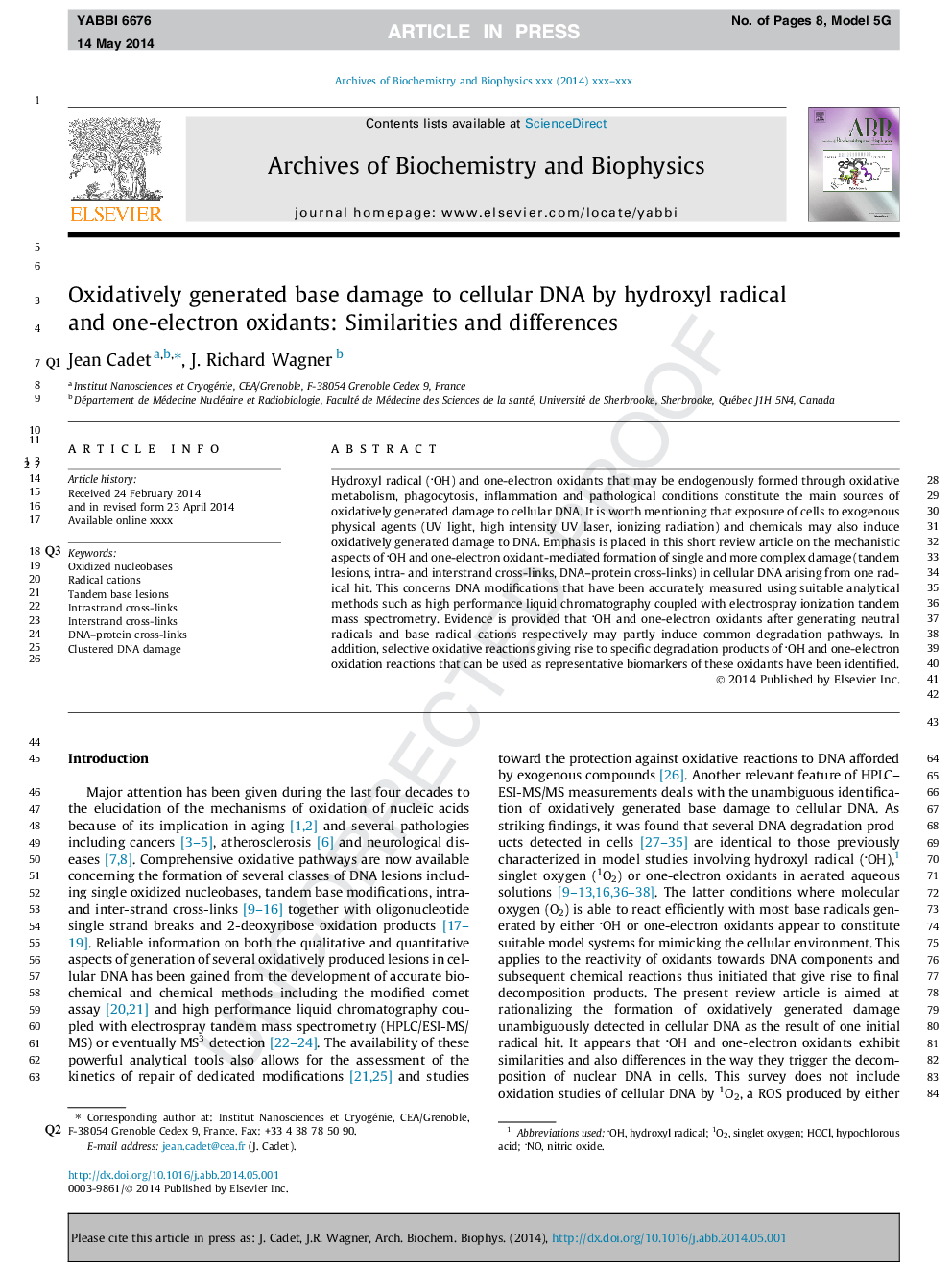| Article ID | Journal | Published Year | Pages | File Type |
|---|---|---|---|---|
| 8290201 | Archives of Biochemistry and Biophysics | 2014 | 8 Pages |
Abstract
Hydroxyl radical (OH) and one-electron oxidants that may be endogenously formed through oxidative metabolism, phagocytosis, inflammation and pathological conditions constitute the main sources of oxidatively generated damage to cellular DNA. It is worth mentioning that exposure of cells to exogenous physical agents (UV light, high intensity UV laser, ionizing radiation) and chemicals may also induce oxidatively generated damage to DNA. Emphasis is placed in this short review article on the mechanistic aspects of OH and one-electron oxidant-mediated formation of single and more complex damage (tandem lesions, intra- and interstrand cross-links, DNA-protein cross-links) in cellular DNA arising from one radical hit. This concerns DNA modifications that have been accurately measured using suitable analytical methods such as high performance liquid chromatography coupled with electrospray ionization tandem mass spectrometry. Evidence is provided that OH and one-electron oxidants after generating neutral radicals and base radical cations respectively may partly induce common degradation pathways. In addition, selective oxidative reactions giving rise to specific degradation products of OH and one-electron oxidation reactions that can be used as representative biomarkers of these oxidants have been identified.
Related Topics
Life Sciences
Biochemistry, Genetics and Molecular Biology
Biochemistry
Authors
Jean Cadet, J. Richard Wagner,
